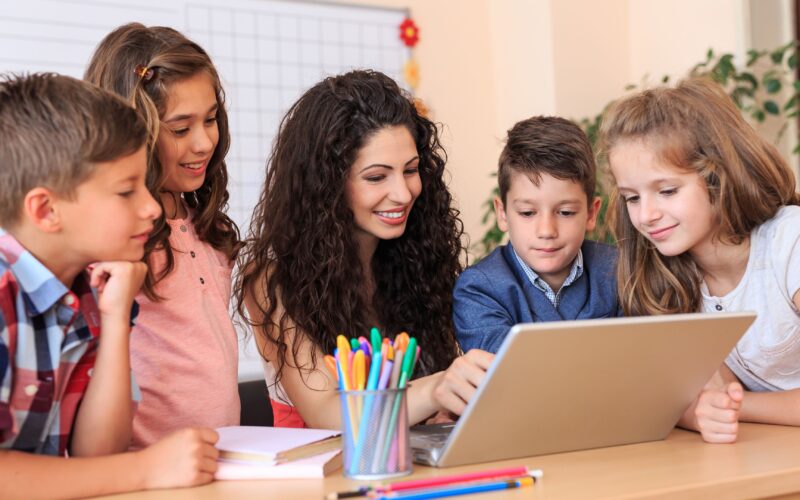In today’s world, preparing students for the future requires more than strong academic skills. It calls for empathy, cultural understanding, and the ability to navigate global issues. That’s where Social Emotional Learning (SEL) and global learning intersect. Together, they help students grow into informed, compassionate global citizens ready to contribute to a more connected, inclusive world.
What Is Global Learning?
Global learning is the process of helping students understand global challenges, recognize how their lives are interconnected with people around the world, and build respect for different perspectives and cultures.
It goes hand in hand with Social Emotional Learning by:
- Encouraging empathy
- Promoting cross-cultural understanding
- Supporting self-awareness and social awareness
- Inspiring responsible decision-making
In an increasingly interconnected world—where issues like climate change, inequality, and migration affect us all—global learning prepares students to understand and respond to real-world challenges with compassion and action.
Why Global Learning Matters
Global learning isn’t just a “nice to have.” It’s essential for shaping the next generation of leaders, innovators, and changemakers.
1. It Builds Global Awareness
Students become aware of issues that transcend borders—like poverty, climate change, and human rights—and understand how their actions can contribute to global solutions.
2. It Develops Critical Thinking
Exposure to multiple perspectives sharpens students’ critical thinking. They learn to ask meaningful questions, weigh evidence, and engage in thoughtful conversations.
3. It Prepares Students for the Future
Today’s employers value cross-cultural communication skills, empathy, and adaptability. Global learning equips students with these competencies, setting them up for success in diverse careers and communities.
Global Competence and SEL: A Natural Pair
Global competence is the ability to understand and engage with the wider world. It includes:
- Respect for diversity
- Understanding cultural perspectives
- Effective communication
- Empathy and collaboration
These are also key pillars of Social Emotional Learning. When SEL is combined with global education, students don’t just learn about the world—they learn how to connect with others, understand complex emotions, and make ethical choices.
Strategies to Embed Global Learning in Your Curriculum
Here’s how educators can turn theory into practice.
1. Incorporate Diverse Perspectives
Use literature, history, and media from around the world. Introduce students to voices they may not have heard before—African authors, Latin American poets, or Indigenous storytellers.
2. Use Technology to Build Bridges
Leverage tools like Zoom or Padlet to connect your classroom with others globally. Encourage collaborative projects with students from different countries.
3. Promote Language Learning
Language classes aren’t just about grammar. They’re a gateway to culture, communication, and respect. Even simple language exchanges can foster global awareness.
4. Foster Empathy Through Research
Encourage students to investigate global challenges like forced migration or climate injustice. Let them present their findings, tell real human stories, and reflect on how they feel about what they’ve learned.
5. Celebrate Cultural Curiosity
Host cultural weeks, food fairs, or guest speaker events. Create space for students to ask questions, celebrate differences, and learn about the world in joyful, meaningful ways.
Empathy: The Heart of Global Learning
Empathy is more than a buzzword—it’s a skill students must practice to truly understand global issues.
- Encourage students to research personal stories behind global events.
- Ask them to imagine themselves in others’ shoes. What would it feel like to flee your home because of war or flooding?
- Facilitate classroom discussions where students respectfully share different views.
- Empower them to brainstorm solutions, no matter how small, to issues like food insecurity or environmental sustainability.
Boosting Communication Through Global Learning
Communication is a vital 21st-century skill—and global learning helps refine it.
Here’s how:
- Use storytelling to help students express their identities and listen to others’.
- Set up peer conversations with students in other schools or countries.
- Encourage debates and discussions on global topics.
- Highlight active listening as a core classroom value.
When students engage in cross-cultural communication, they become better listeners, stronger writers, and more respectful collaborators.
The Role of Educators: Be the Spark
As an educator, you play a central role in creating a global classroom. You don’t need a travel budget or a fancy exchange program. You just need intention, curiosity, and a few good strategies.
Tips to get started:
- Begin with one global theme—such as sustainability or human rights—and build a lesson around it.
- Look for professional development on global education and SEL.
- Connect with other educators to share ideas and resources.
- Celebrate even small student-led projects that show curiosity about the world.
By fostering global learning, you’re not just teaching students—you’re empowering global citizens.
The Benefits of Global Learning on Student Growth
Let’s recap some of the powerful outcomes:
- Greater critical thinking: Students analyze global events and ask deeper questions.
- Broader perspectives: They appreciate cultures, values, and experiences different from their own.
- Improved SEL outcomes: Global learning supports empathy, self-awareness, and social skills.
- Better preparation for the future: Students gain skills relevant to modern workplaces and communities.
In short, global learning is SEL in action.
Leveraging Technology for Global Impact
Here are tech-based ways to enrich global learning:
- Virtual exchanges: Use Google Meet to connect classrooms.
- Global projects: Collaborate on climate awareness campaigns using Google Docs.
- Immersive experiences: Try VR apps that let students “visit” another country.
- Student-led podcasts: Let students create episodes exploring global topics or interviewing peers from other cultures.
These experiences make global learning tangible, exciting, and real.
Conclusion: A New Lens for a Changing World
“The world is a book, and those who do not travel read only one page.” — Saint Augustine
Through Social Emotional Learning and global learning, students don’t just read more pages—they understand the entire story.
Global learning helps students become compassionate problem-solvers who can collaborate across cultures, communicate clearly, and take action on global challenges. In doing so, it helps build a brighter, more inclusive future for everyone.
As educators, let’s empower students to turn empathy into action—and become the global citizens our world needs.


